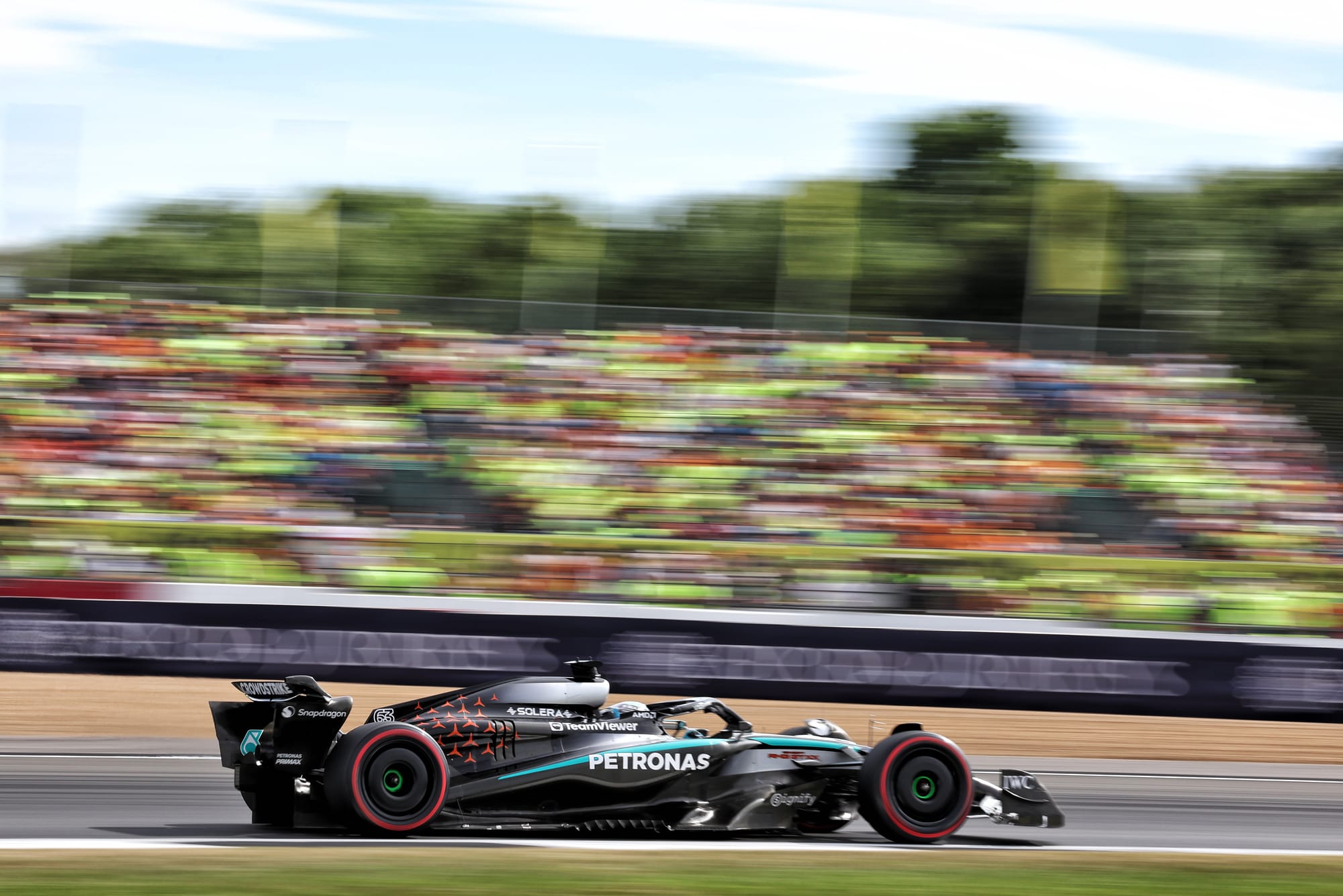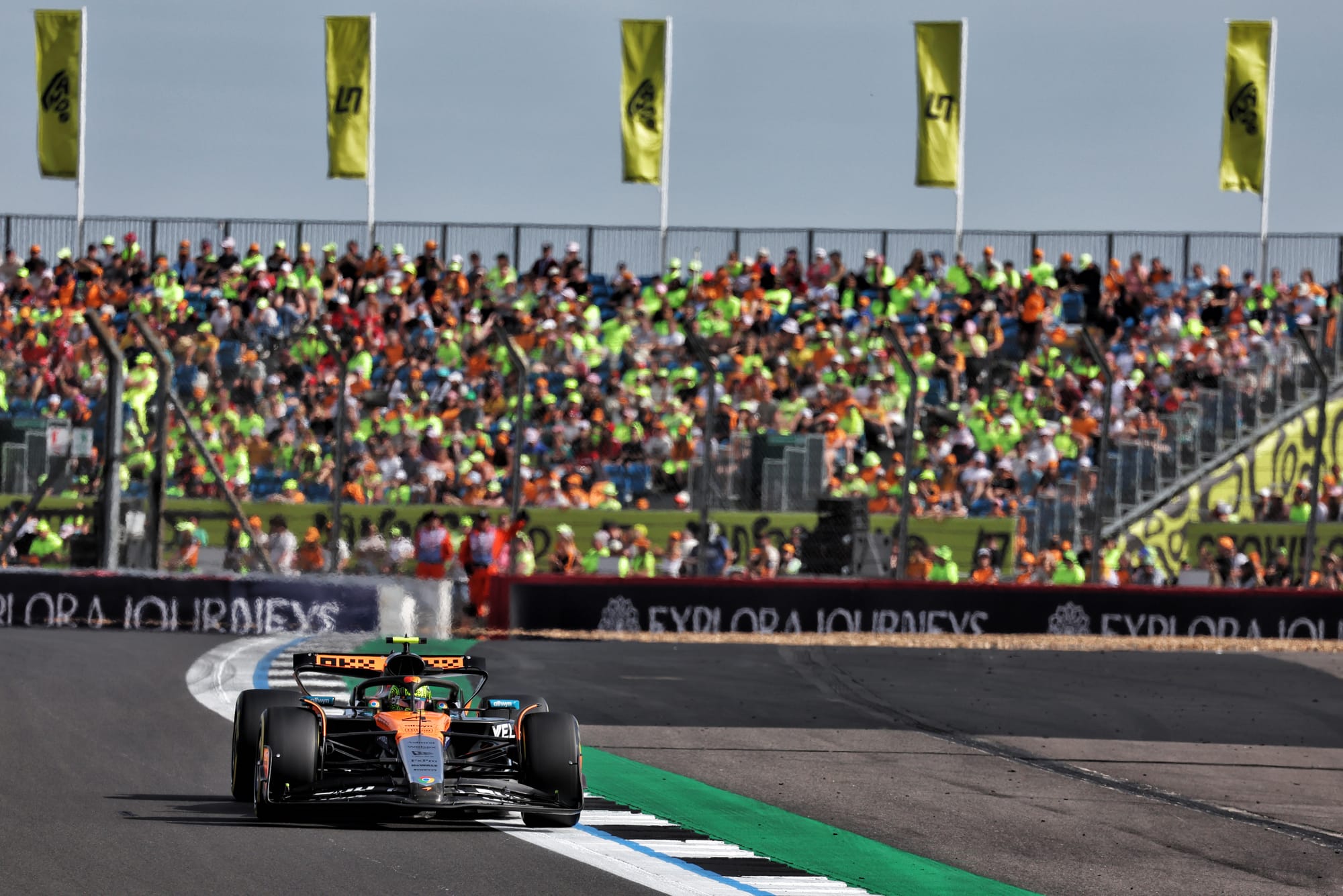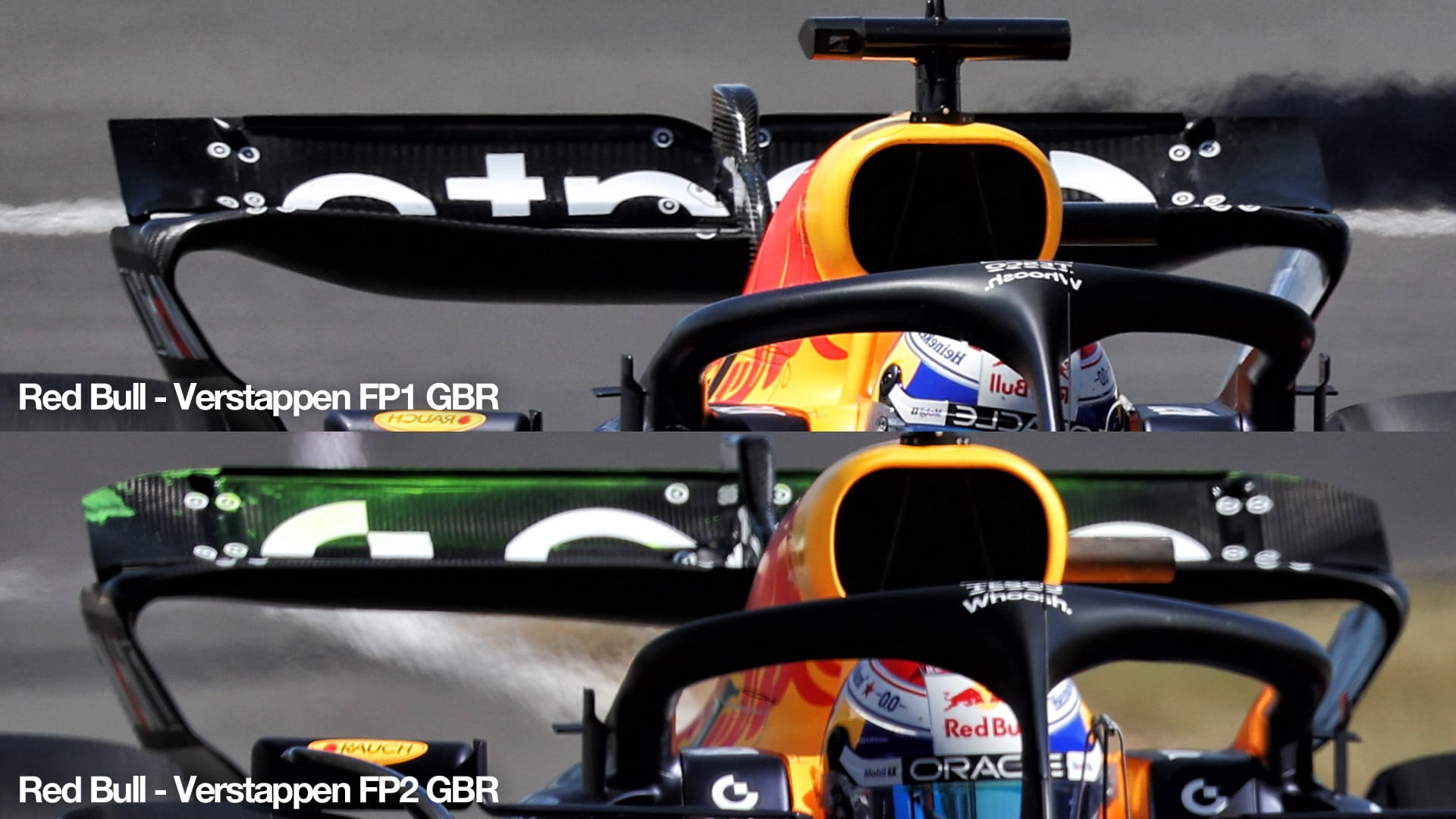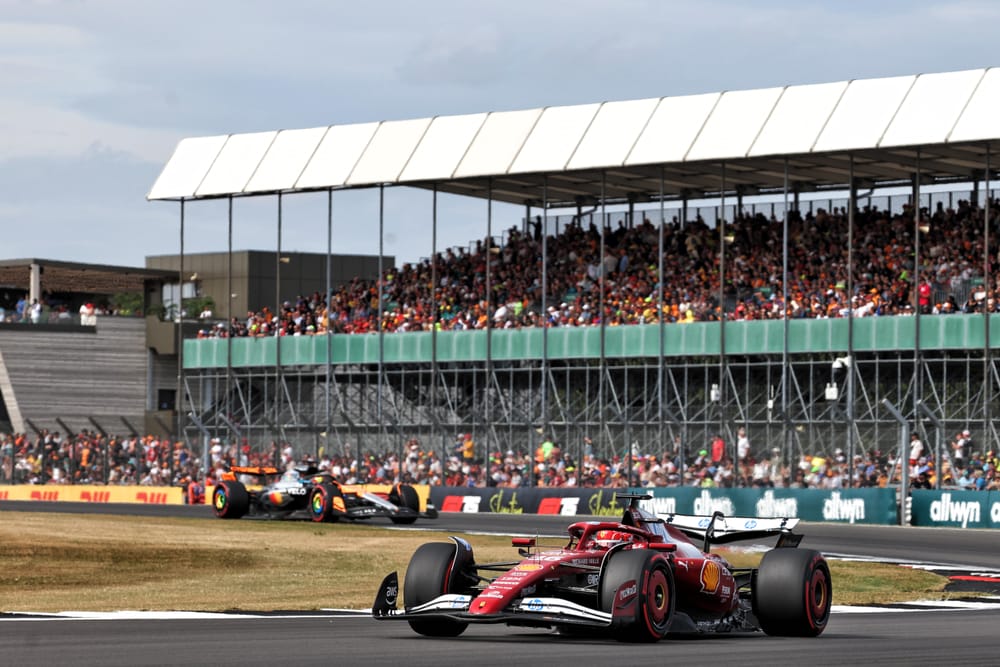The headline take from the Friday practice sessions at Formula 1’s British Grand Prix is that the Ferrari, with its updated Austria floor, is very quick around a gusty but hot Silverstone. Almost as quick as McLaren.
This was by far Ferrari’s best Friday of the season and it does appear as if the car is on a good path at last ahead of the introduction of its new rear suspension at the next round at Spa.
Red Bull and Mercedes are struggling to greater or lesser degrees, even though Max Verstappen did set the fastest average in the long run simulations. Lando Norris’ McLaren set the single lap pace, around 0.2 seconds clear of Charles Leclerc’s Ferrari.
FP2 long run averages
- Verstappen 1m32.02s (7 laps)
- Leclerc 1m32.06s (9 laps)
- Norris 1m32.22s (6 laps)
- Piastri 1m32.33s (6 laps)
- Hamilton 1m32.49s (5 laps)
- Antonelli 1m32.74s (12 laps)
- Russell 1m32.86s (11 laps)
- Alonso 1m33.23s (7 laps)
- Albon 1m33.25s (10 laps)
- Lawson 1m33.25s (7 laps)
Track temperatures around a glorious Silverstone for FP2 began at 40deg C and had fallen only to 38-deg C by the end of the session. This is significant information because the forecast is for those temperatures to be around 8-deg C cooler for both qualifying and race – with the possibility of light showers too.

This is particularly significant for Mercedes, as its Friday struggles were all about overheating tyres, both front and rear. It’s a fast, long-corner circuit and as such presents its particular difficulties for this car, especially with a Pirelli compound choice one-step softer than last year. Even over the course of a single lap, George Russell and Kimi Antonelli were managing tyre temperatures and were around half-a-second off McLaren pace. The hope is that the cooler temperatures of the rest of the weekend will take the Mercedes rubber below the crucial threshold.
Verstappen’s performance over his run on mediums was particularly nicely-judged, starting in the mid 1m31s yet averaging only half-a-second slower after seven laps. Judging the ideal initial pace before the tyre temperatures have stabilised is particularly tricky around such a fast, long-corner track. Too fast and the tread temperatures will spike before the core has properly warmed through – and the tyres will be compromised for the rest of the stint. Too slow – and you find out as the flag drops that you still have performance in hand and could have gone faster. It’s all guided by masses of data and sensors but ultimately comes down to judgement and luck.

McLaren’s Norris and, especially, Oscar Piastri essentially began too conservatively in the high 1m31s/low 1m32s. Ferrari, with both Leclerc and Lewis Hamilton, began too hot in the mid-1m30s and the tyres were suffering after relatively few laps. This is not felt to be an intrinsic problem and its long runs on the soft in FP1 were super-impressive.
“In our qualifying trim, we still seem to be a bit on the back foot, while we are more at ease with our race pace,” said Leclerc.
The reference to the qualifying was the fact that the Ferrari had needed two laps to equalise the temperatures between front and rear axles, hence it was unable to exploit the new tyre grip available to the McLarens.
However, Verstappen was not confident that the long run numbers were representative of where he and Red Bull are really at. His pace in the single lap runs, around 0.5s off Norris and similar to Mercedes, may actually paint a truer picture.

The updated floor stayed on the car and Verstappen chose a relatively skinny wing (with team-mate Yuki Tsunoda on the old floor and a bigger wing) a further 0.8s adrift.
McLaren brought a new floor here, but it was not on the car in FP2 as Norris and Piastri standardised around the standard floor and the lower downforce rear wing used by Piastri in FP1 (where Hamilton headed the times, narrowly, from Norris).



